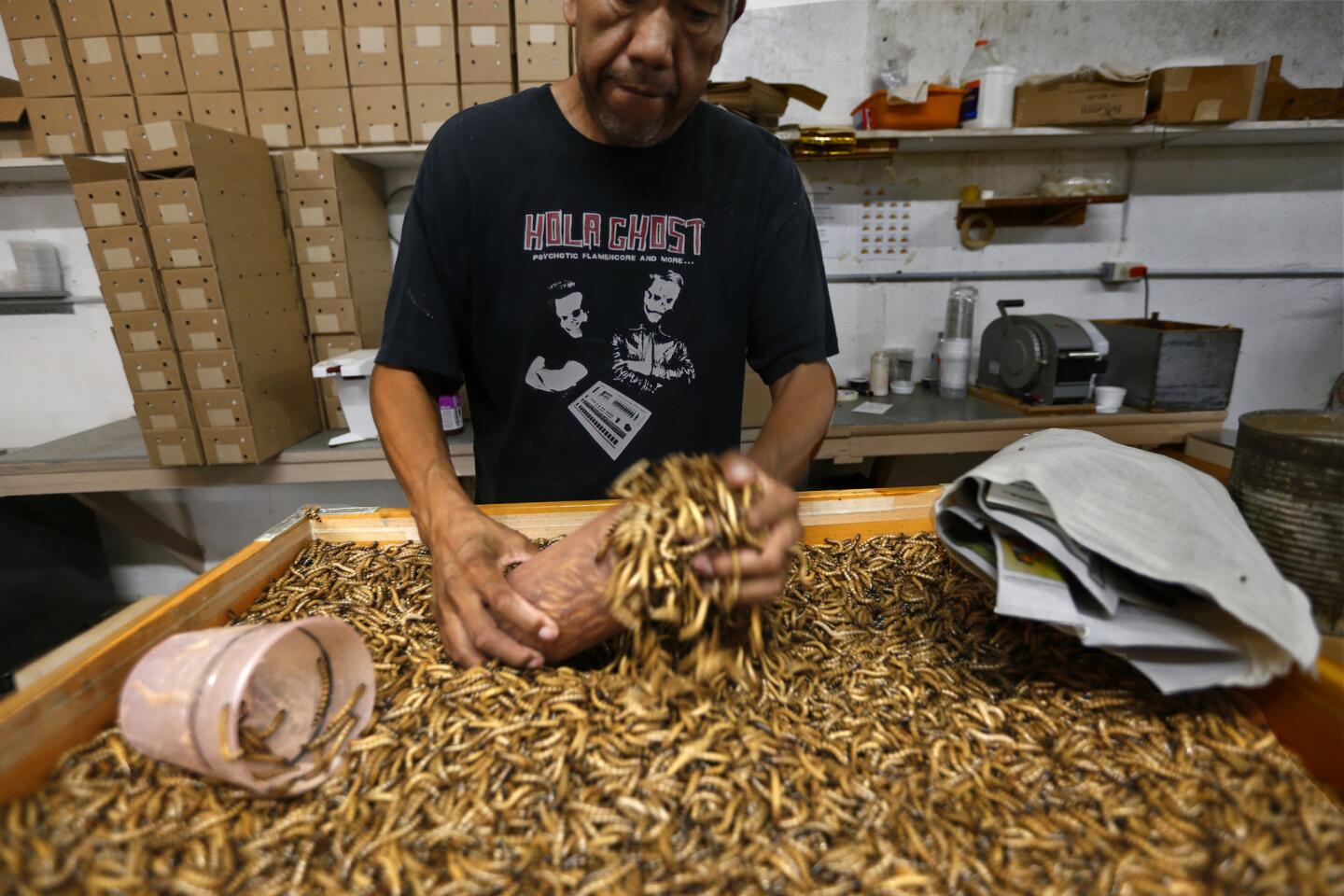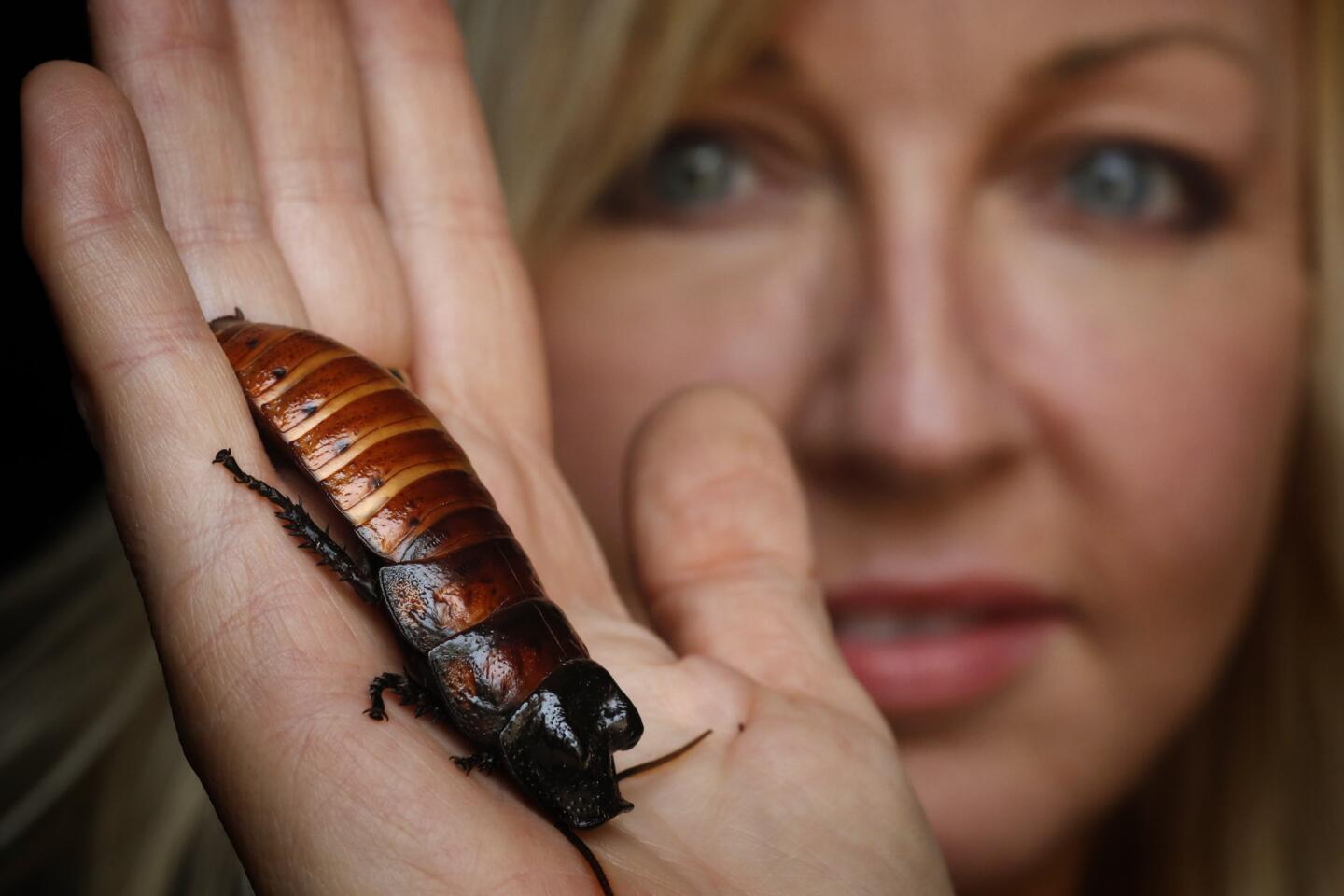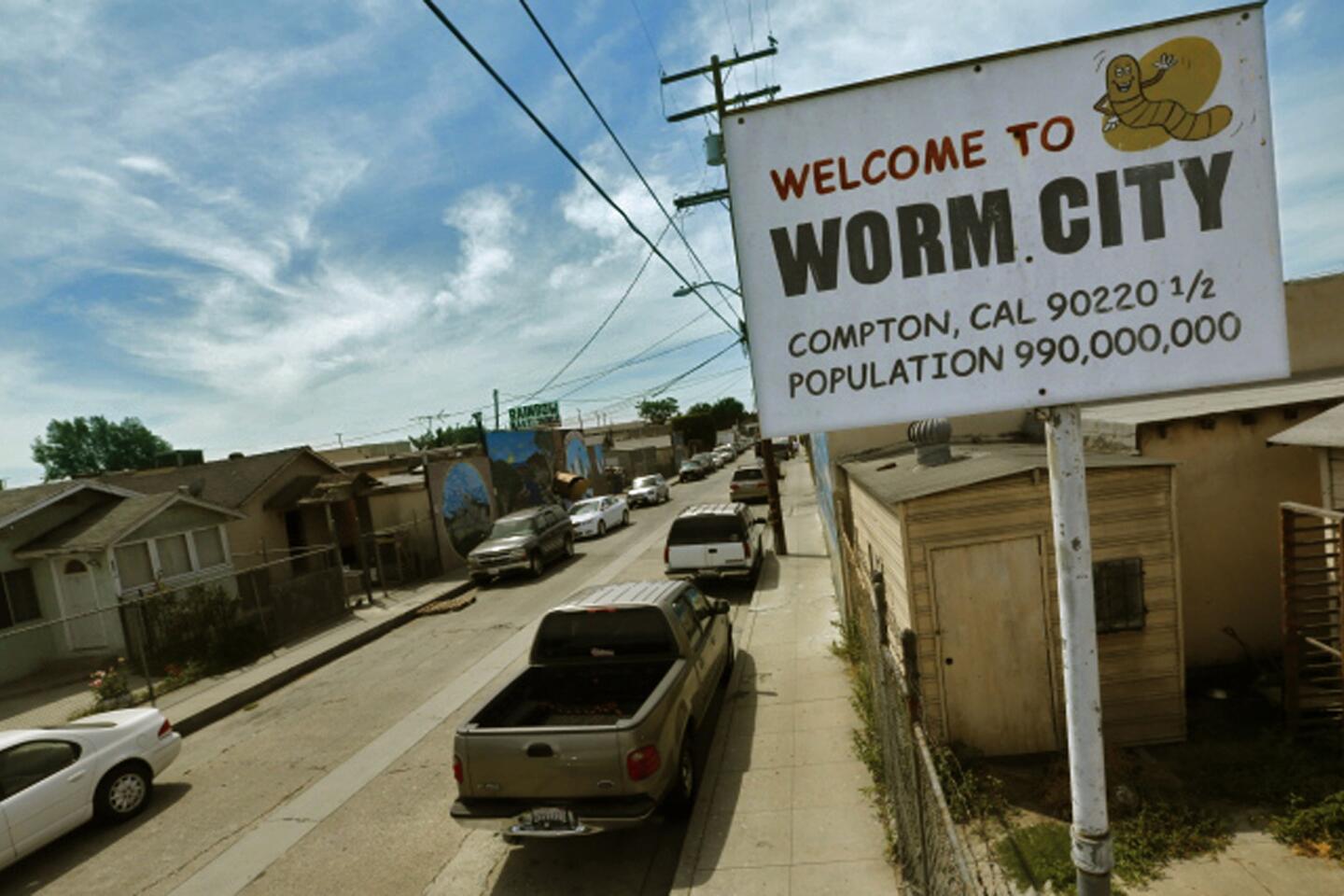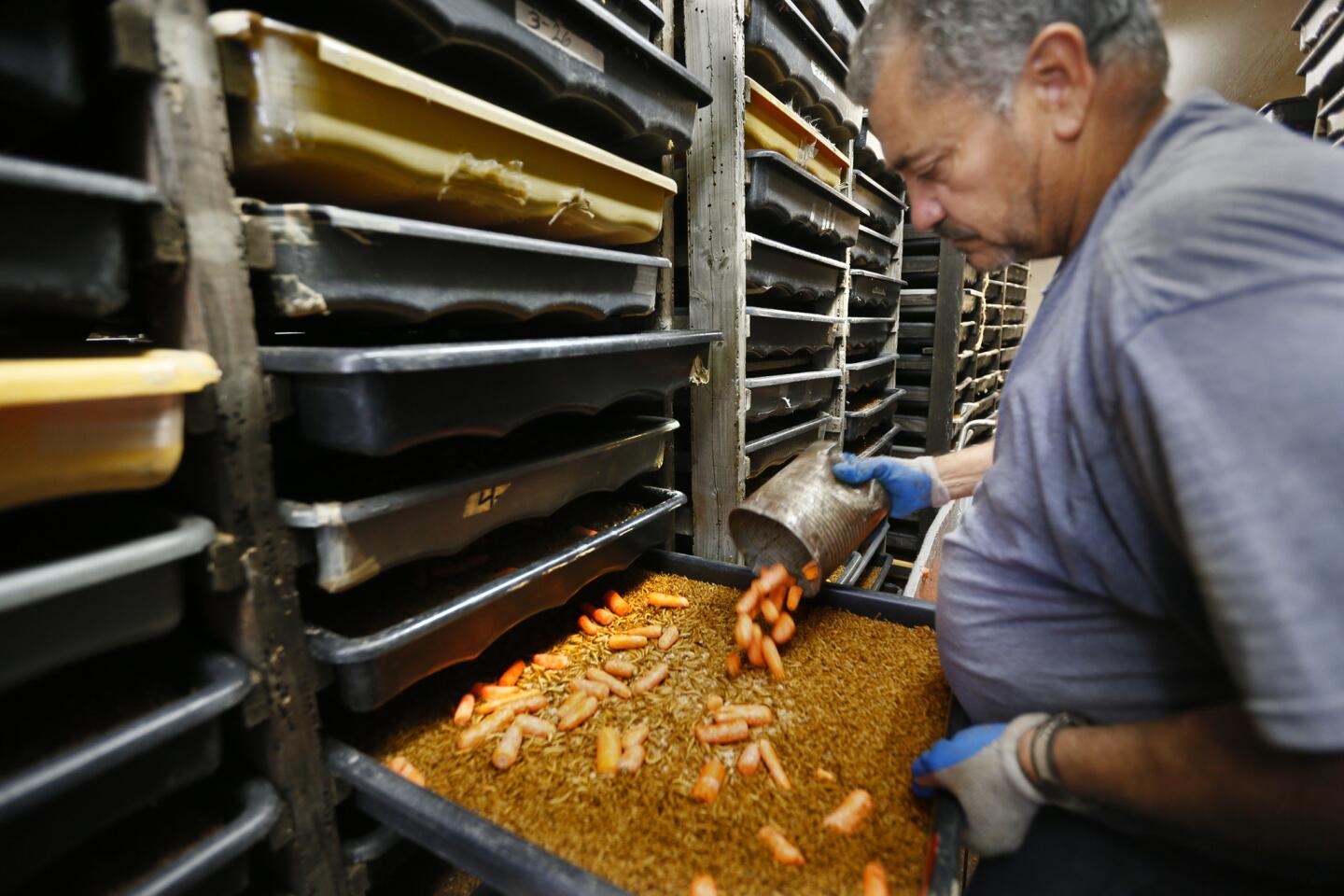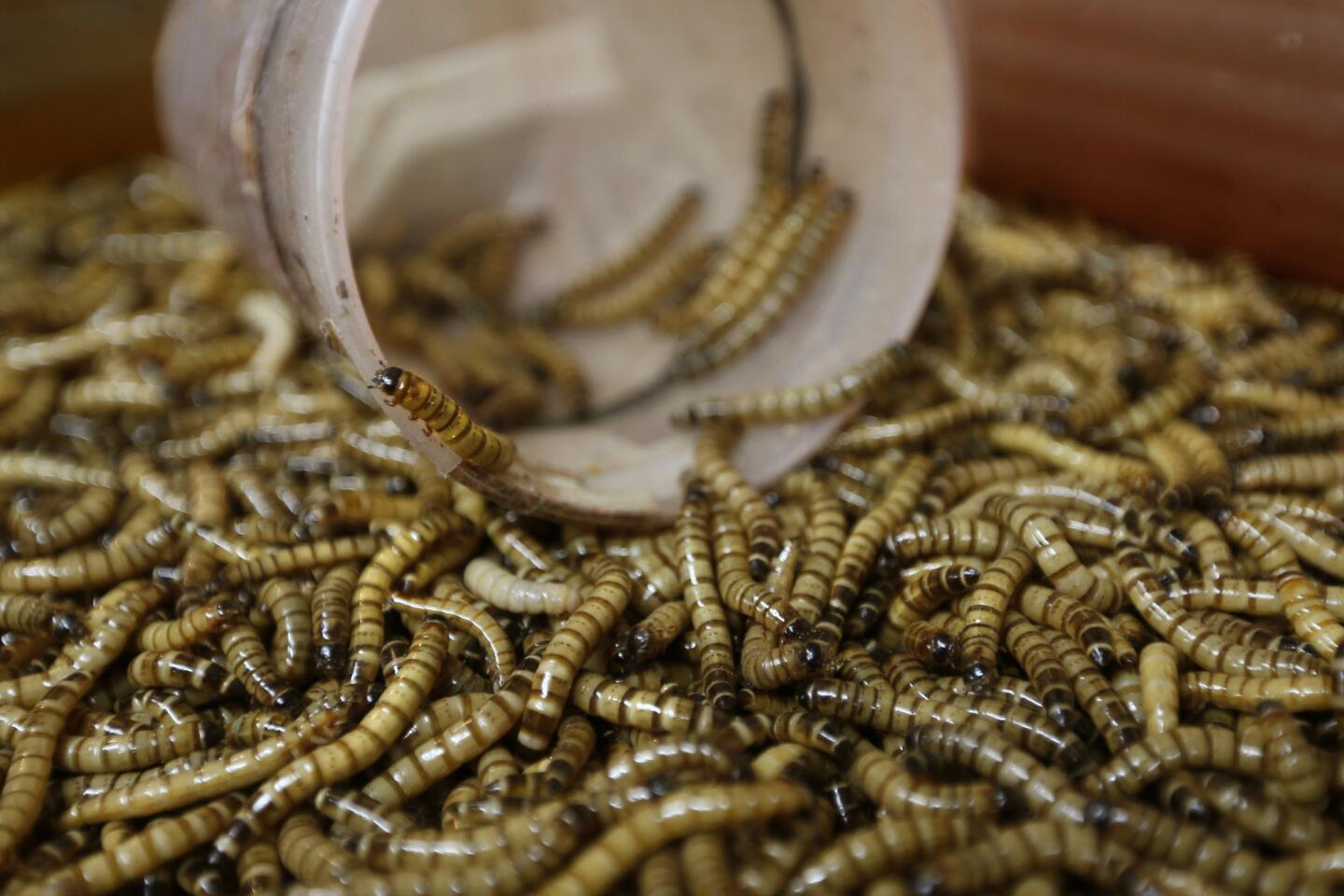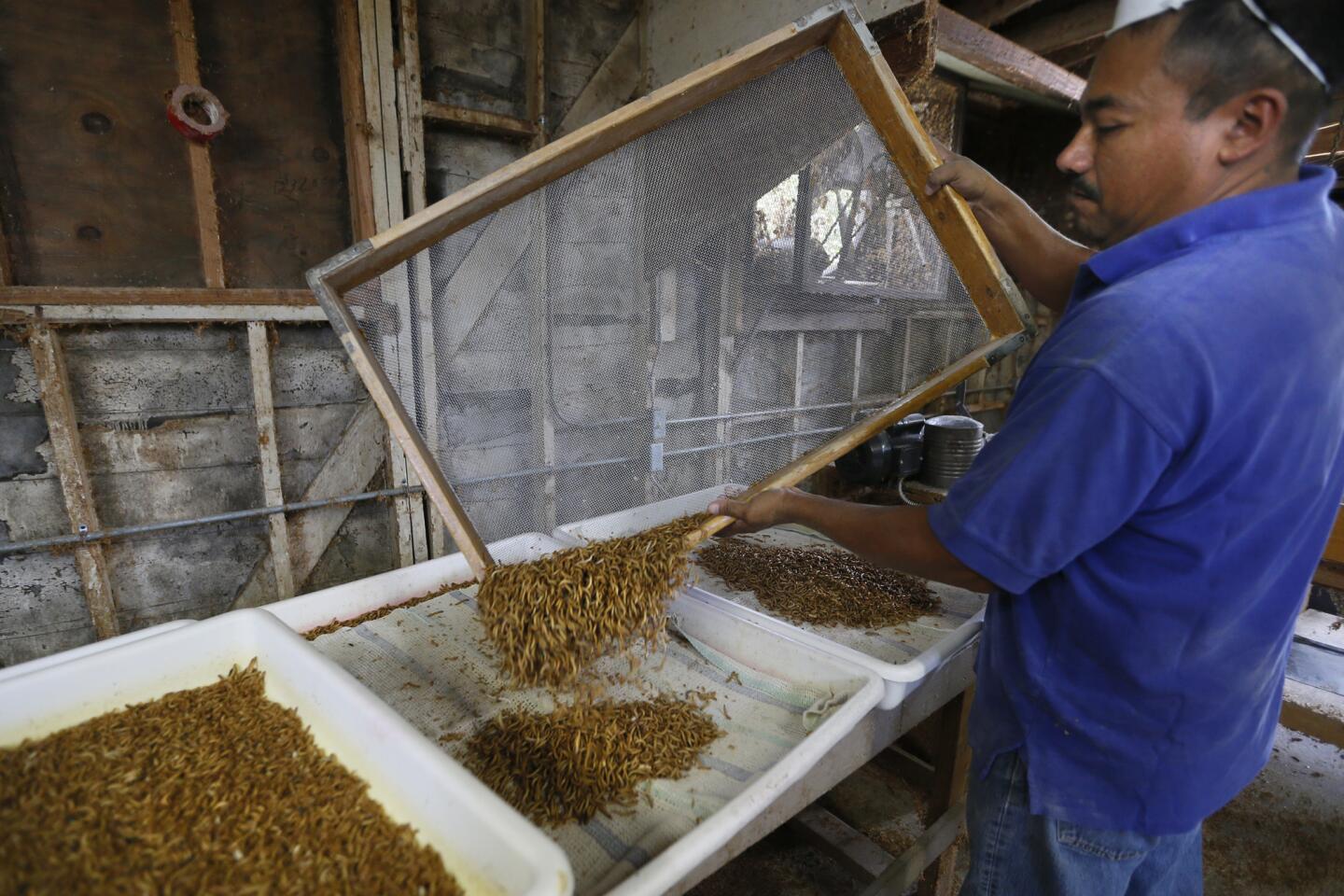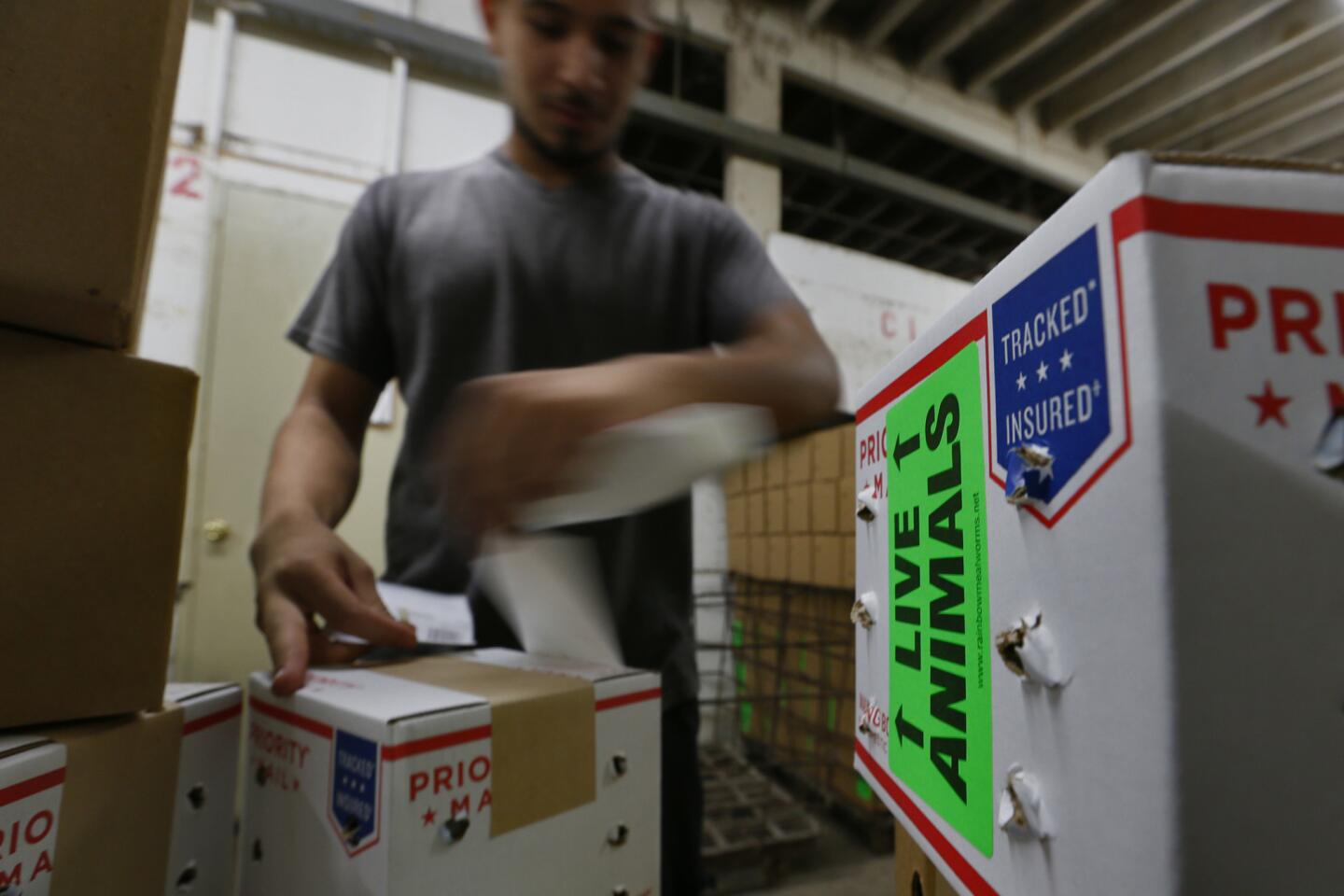Great Read: From icky bugs to good grub: Why more people are eating insects
Gillian Spence plunges her hand into a shallow tray of 10,000 writhing mealworms. She comes up with a handful of the inch-long, beige-colored grubs, which squirm over and between her fingers.
Most are destined to become bait for fish or food for reptilian pets. But not all of them.
“A lot of orders now are going to restaurants,” she says.
Spence’s Compton company, Rainbow Mealworms, supplies the mealworms and their larger, feistier cousins, called superworms, to a number of edible-insect businesses across the country. One, called Hotlix, puts them inside lollipops.
Mealworms and superworms aren’t actually worms at all — they’re the larval forms of two species of darkling beetles. They’re also two of the roughly 1,900 insect species that are good for people to eat, according to the United Nations’ Food and Agriculture Organization.
SIGN UP for the free Great Reads newsletter >>
Mealworms and superworms are rich in protein, amino acids and vitamins and minerals like potassium and iron. Plus, they have less fat and cholesterol than beef.
These and other insects are also considered an environmentally friendly source of protein because they can be raised on a fraction of the land and water required for traditional livestock, like cattle.
That’s clear at Rainbow Mealworms. At its complex of small houses, millions of beetles — in all life stages from larvae to adults — live in trays stacked on 8-foot-tall racks that look like they belong in a bakery. Each tray teems with thousands of insects nestled in a bed of whole wheat bran, which they eat, and fresh baby carrots, which they nibble on for water.
Their flavor, when toasted, is often described as being nutty and crispy, akin to roasted pecans or fried pork rinds. And despite the obvious “yuck” factor, the demand to eat them is growing.
“I probably get an email a day asking about it,” Spence said.
::
Although 2 billion people around the world consider insects a dietary staple, they’ve been in the American food supply for just a few years.
It started in earnest with Chapul, an energy bar company that makes its product with cricket powder. In 2011, Pat Crowley, one of the company’s founders, had finished his training in hydrology and was working on long-term water planning for the Western U.S. The forecast didn’t look good to him.
With so much of the region’s water going to agriculture, it was clear to Crowley: “We need some large-scale changes to our food supply if we want to have enough water in the future.”
When he heard a TED talk about the benefits of edible insects, he latched on to it as a possible solution. The health and environmental benefits were clear.
But Crowley didn’t think mainstream Americans were ready to eat cricket legs or wings. So he toasted the critters and ground them up, mixing the resulting powder with fruit, nuts and chocolate into a familiar energy bar. After a successful Kickstarter campaign, the first batch of Chapul bars hit the market in 2012.
“No one was doing anything like it,” he said. “It was definitely blowing people’s minds.”
He received a measure of validation the following year when the U.N. Food and Agriculture Organization released a hefty report that concluded: “The consumption of insects … contributes positively to the environment and to health and livelihoods.”
Compared with cattle, cultivated insects emit far fewer greenhouse gases, require less water, can be grown in a smaller space, can eat foods like vegetable scraps that would otherwise be considered waste, and can grow more protein from less feed, according to the report. For instance, growing mealworms for food requires about one-tenth as much space as raising an equivalent amount of beef protein, the report says.
After the publication, a handful of other businesses sprung up to sell ground crickets in familiar foods like chips and cookies.
Even U.S. government agencies got interested. Since 2013, the Department of Agriculture has invested $550,000 in research projects that aim to develop a shelf-stable insect protein powder. The resulting cricket powder, made from a pasteurized, dehydrated slurry of frozen insects, is now widely used in edible bug snacks.
::
But as the industry grows, questions arise.
How environmentally friendly are edible insects, really?
A study published in 2015 in the scientific journal PLOS One found that crickets raised on poultry feed required nearly as much food as conventionally raised chickens per unit of protein produced. If crickets aren’t able to convert feed into protein more efficiently than chickens, they really aren’t that much more sustainable, the researchers concluded.
But chickens have been bred for decades to grow big on as little food as possible, said study leader Mark Lundy, an agronomist at the University of California’s Division of Agriculture and Natural Resources. A similar program to breed edible insects that thrive on food scraps and other waste products could provide the biggest opportunities for sustainability gains, he said.
And compared with cows, crickets are way more efficient eaters. Feedlot cattle require at least 6 pounds of food to put on 1 pound of weight, and only about half of that weight is actual meat, said Dan Shike, an animal sciences researcher at the University of Illinois at Urbana-Champaign. In contrast, crickets in the 2015 PLOS One study required about 2 pounds of food to put on 1 pound of weight collectively, and the whole insect is edible.
Insects also beat traditional livestock in other measures of sustainability.
Another PLOS One study from 2012 found that the greenhouse gas emissions that result from raising mealworms were up to four times lower than those created in the production of milk, pork or chicken, and up to 12 times lower than the emissions from raising beef.
In general, insect farming is a meticulously clean practice. Edible insects are quite sensitive to chemicals, so they can’t be exposed to artificial food additives. Spence, at Rainbow Mealworms, says she can’t even put flea collars on her cats because any trace of pesticide could wipe out her stock.
But there aren’t any specific insect-farming rules that U.S. producers must follow, said Sonny Ramaswamy, director of the USDA’s National Institute for Food and Agriculture.
“There are some regulations that are needed,” he said.
For now, edible insects fall under the jurisdiction of the Food and Drug Administration, which says insects destined for human consumption must be grown and processed according to the same standards as other foods. FDA spokeswoman Lauren Sucher says food manufacturers are responsible for making that happen.
Spence got an FDA-approved nutritional label in July, clearing the way for her to officially advertise her mealworms as people food and sell them directly to consumers. It also means her customers can feel assured that the wriggly ingredients are grown according to federal food production standards.
::
The bugs arrive from Rainbow Mealworms in 20 cardboard boxes: 40,000 mealworms and 40,000 superworms, live and packaged in clean, unbleached muslin cloth.
Monica Martinez unwraps the packages and carefully rinses the wriggling grubs, checking them over to make sure they’re all healthy. Then she puts the insects in the fridge to cool off. Once they’re lethargic, she pops them on a baking tray and slides them into the oven to roast. No extra oil needed.
Martinez owns Don Bugito, a San Francisco-based eatery that aims to revive the ancient Mexican culinary tradition of eating insects. She caramelizes the mealworms in toffee, coats them in chocolate for a sweet treat, and dips the superworms into a chile-lime seasoning to make spicy snacks.
“They have more flavor than crickets,” Martinez said.
Don Bugito’s snacks are a consistent bestseller at a kiosk in San Francisco’s Ferry Building, a foodie mecca. One of the main selling points is that they are made with a sustainable protein source.
A lot of people say the first bite is the hardest.
“It’s a little tricky to convince people to taste them,” Martinez said. “But people respond really amazingly once they try it.”
Now Martinez is working on a new, more appetizing name for her main ingredient.
So is Eli Cadesky, founder of a new company called C-fu Foods that isolates mealworm proteins to make a tofu-like substance. He’s thinking of rebranding mealworms as “baby beetles,” akin to other trendy foods like “baby carrots” or “baby beets.”
“Worm,” he said, “is the word that turns everybody off.”
Twitter: @sasha_hl
